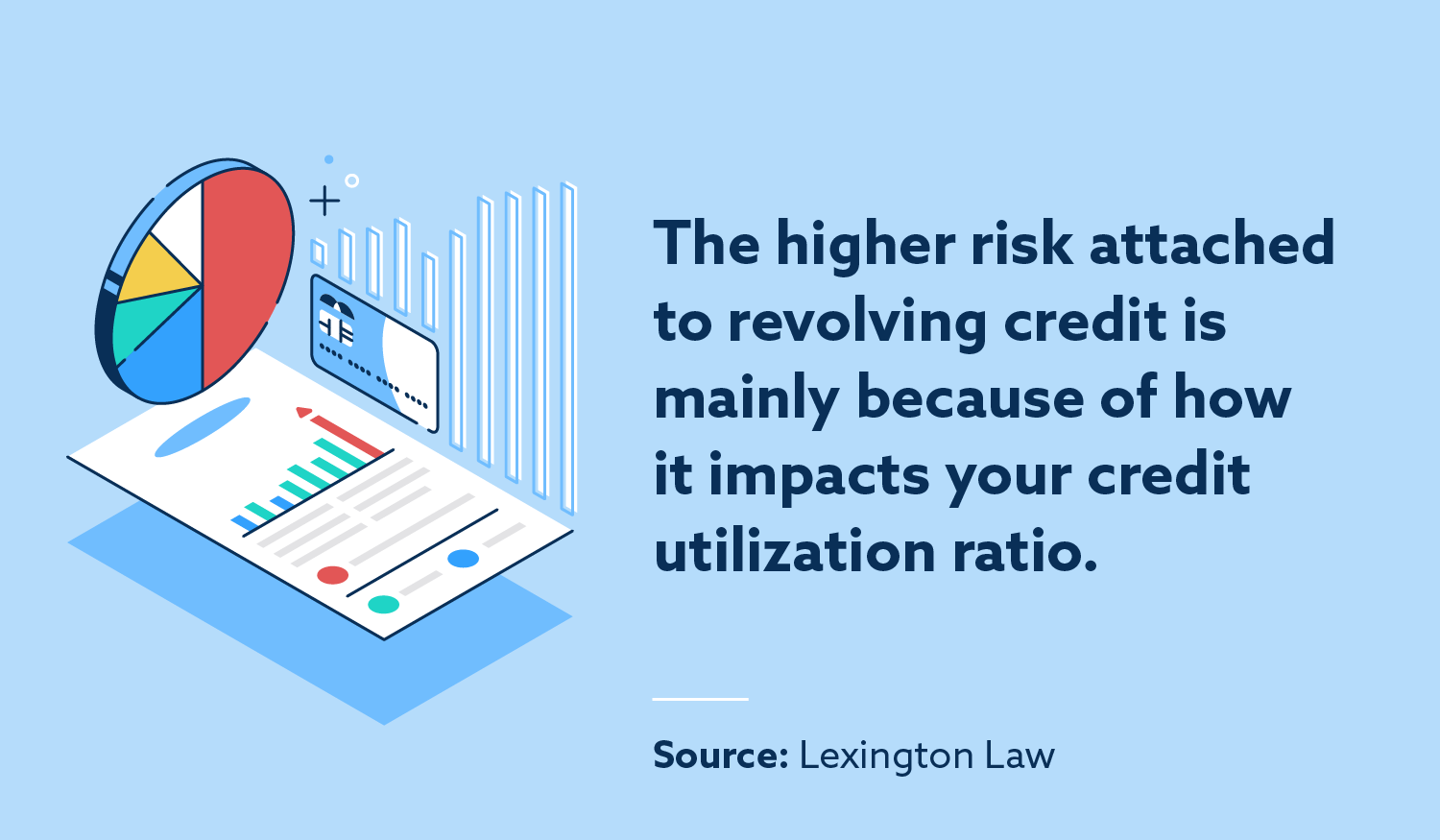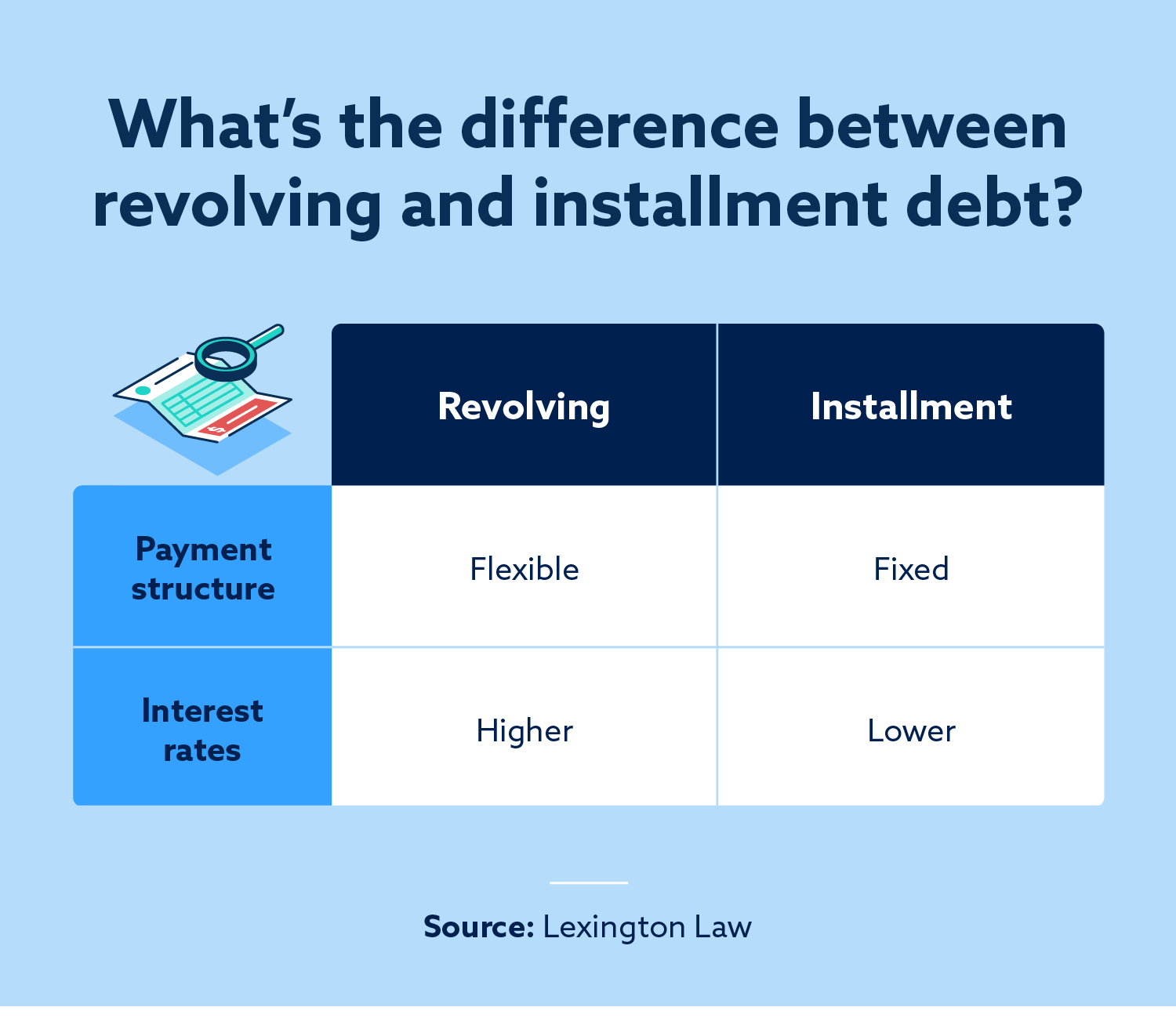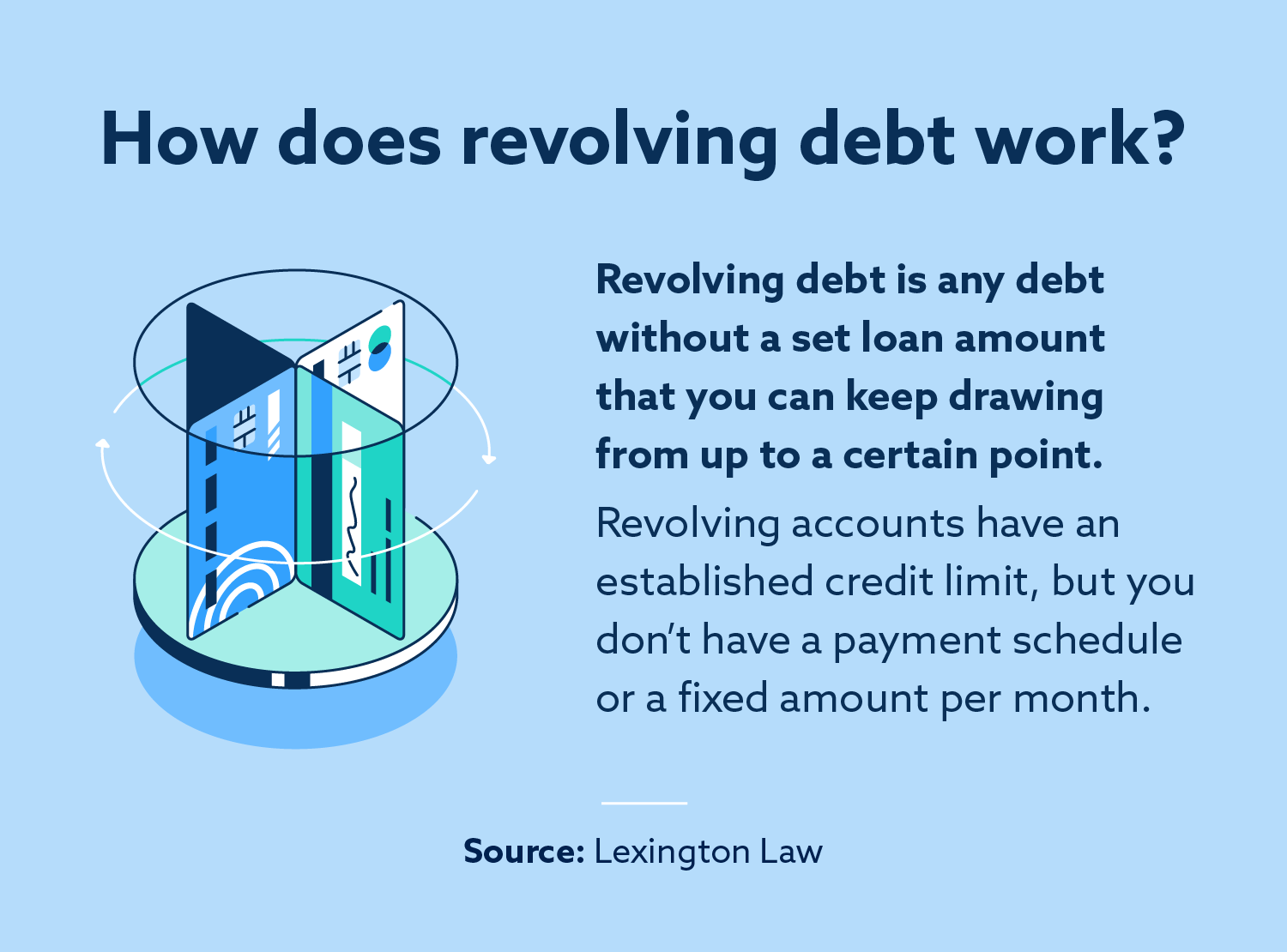If you’re looking to understand the concept of revolving debt, you’ve come to the right place. Revolving debt is basically any debt that doesn’t have a set loan amount for a specific period of time. Think credit cards, personal lines of credit, and home equity lines of credit (HELOCs). With revolving debt, you have the flexibility to borrow up to a credit limit without following a payment schedule or paying a fixed minimum amount each month. Pretty cool, right? But, the catch is that you’ll have to deal with high interest rates. On the other hand, there’s installment debt, which follows a clear repayment schedule and has fixed payments. This type of debt, like loans for big purchases, typically has lower interest rates compared to revolving debt. Both types of debt can impact your credit score, but don’t worry – managing multiple types of credit responsibly can actually help build your credit.
Understanding Revolving Debt
Definition of Revolving Debt
Revolving debt refers to any debt without a set loan amount for a specific period of time. Unlike installment debt, which is repaid through regularly scheduled payments or installments, revolving debt allows individuals to borrow up to a credit limit without following a payment schedule or paying a fixed minimum amount each month. This means that the amount borrowed can vary from month to month, and individuals have the flexibility to borrow more as the balance is paid down.
Common Forms of Revolving Debt
The most common form of revolving debt is a credit card. With a credit card, individuals have a designated credit limit that they can use to make purchases. They are not required to pay off the entire balance each month, but rather have the option to make a minimum payment or pay any amount they choose. Other common forms of revolving debt include home equity lines of credit (HELOCs), personal lines of credit, and business lines of credit.
Payment Structures in Revolving Debt
Payments for revolving debt are a percentage of the amount borrowed each month. For example, if you have a credit card with a $1,000 balance and a minimum payment requirement of 2%, you would need to make a payment of $20 that month. The percentage can vary depending on the terms of the debt. Interest is charged on any remaining balance, so if you only make the minimum payment, you will continue to accrue interest on the unpaid balance.
Flexibility and Risks of Revolving Debt
Revolving debt offers flexibility to individuals, as they can choose how much to borrow and how much to repay each month. This can be useful for managing cash flow or dealing with unexpected expenses. However, there are also risks associated with revolving debt. The interest rates for revolving debt are often higher compared to installment debt, which means that if you carry a balance from month to month, you could end up paying a significant amount of interest over time. Additionally, having a high amount of revolving debt relative to your credit limits can negatively impact your credit score. It’s important to understand the risks and carefully manage revolving debt to avoid falling into a debt spiral.
Types of Revolving Debt
Credit Card Debt
Credit card debt is the most common form of revolving debt. With a credit card, you have a designated credit limit that you can use to make purchases. You have the flexibility to use as much or as little of your available credit as you need, and you can make minimum payments or pay off the balance in full each month. However, it’s important to note that the interest rates for credit cards are typically higher compared to other types of debt, and carrying a balance from month to month can result in significant interest charges.
Home Equity Lines of Credit (HELOCs)
A home equity line of credit, or HELOC, is a type of revolving debt that is secured by the equity in your home. With a HELOC, you can borrow up to a certain percentage of the appraised value of your home, minus any outstanding mortgage balance. The funds from a HELOC can be used for a variety of purposes, such as home renovations, debt consolidation, or educational expenses. Similar to credit card debt, the interest rates for a HELOC are typically variable and can be higher than other forms of debt.
Personal Lines of Credit
A personal line of credit is another type of revolving debt that allows you to borrow up to a certain limit. This type of debt is typically unsecured, meaning it is not backed by any collateral. Personal lines of credit can be useful for managing short-term cash flow needs or covering unexpected expenses. Interest rates for personal lines of credit can vary but are generally lower compared to credit card debt.
Business Lines of Credit
Business lines of credit function similarly to personal lines of credit but are specifically designed for business purposes. With a business line of credit, you can borrow funds up to a predetermined limit to finance operations, manage cash flow, or cover expenses. This type of revolving debt can be an important tool for small businesses to manage their finances and meet short-term funding needs.

This image is property of www.lexingtonlaw.com.
Comparing Revolving Debt and Installment Debt
Definition of Installment Debt
Unlike revolving debt, installment debt is repaid through regularly scheduled payments or installments. The loan amount, interest rate, and repayment period are fixed at the time of borrowing. This means that borrowers know exactly how much they need to pay each month and when the loan will be fully repaid. Common forms of installment debt include loans for big purchases like homes or cars, as well as student loans.
Common Forms of Installment Debt
Some common forms of installment debt include mortgages, auto loans, student loans, and personal loans. These types of debt are typically used to finance specific purchases or investments. For example, a mortgage is used to purchase a home, while an auto loan is used to finance the purchase of a car. The terms of installment debt, such as the interest rate and repayment period, vary depending on the lender and the individual’s creditworthiness.
Payment Structures in Installment Debt
Installment debt has fixed payments and a clear repayment schedule. Borrowers are required to make regular monthly payments that include both principal and interest. The repayment period can vary depending on the loan, with shorter-term loans requiring higher monthly payments but resulting in less interest paid over time. It’s important to make these payments on time and in full to avoid any negative impact on your credit score.
Interest Rates in Revolving vs. Installment Debt
In general, installment debt tends to have lower interest rates compared to revolving debt. This is because installment debt is secured by an asset, such as a car or a home, which reduces the lender’s risk. Revolving debt, on the other hand, is often unsecured and carries a higher risk for lenders. Additionally, revolving debt offers more flexibility in terms of borrowing and repayment, which can also contribute to higher interest rates.
Differences in Flexibility and Risks
The main difference between revolving debt and installment debt lies in their flexibility and repayment structures. Revolving debt allows individuals to borrow as needed and make variable payments, while installment debt has fixed payments and a clear repayment schedule. This flexibility can be beneficial for managing short-term cash flow needs or unexpected expenses. However, revolving debt often comes with higher interest rates and carries the risk of accumulating a high amount of debt due to its flexible repayment structure. It’s important to carefully consider your financial situation and goals when choosing between revolving and installment debt.
Revolving Debt and Its Impact on Credit Utilization Ratio
Definition of Credit Utilization Ratio
Credit utilization ratio is a measure of how much debt you have compared to your available credit. It is calculated by dividing your total credit card balances by your total credit card limits. For example, if you have a total credit card balance of $1,000 and a total credit card limit of $5,000, your credit utilization ratio would be 20%. This ratio is an important factor in determining your credit score and can have a significant impact on your creditworthiness.
How Revolving Debt Affects Credit Utilization Ratio
Revolving debt, such as credit card debt, can have a direct impact on your credit utilization ratio. As you use your credit card and accumulate a balance, your credit utilization ratio will increase. If you have a high credit utilization ratio, it can be seen as a sign of financial risk by lenders and can negatively impact your credit score. On the other hand, if you have a low credit utilization ratio, it can demonstrate responsible credit management and positively impact your credit score.
Strategies to Maintain an Optimal Credit Utilization Ratio
To maintain an optimal credit utilization ratio, it’s important to keep your credit card balances low relative to your credit limits. This means avoiding carrying a high amount of credit card debt from month to month. One strategy is to regularly review your credit card balances and make payments to keep them as low as possible. You can also consider requesting a credit limit increase from your credit card issuer, which can help lower your credit utilization ratio. However, it’s important to note that increasing your credit limit does not mean you should spend more. The goal is to maintain a low balance relative to your credit limit.

This image is property of www.lexingtonlaw.com.
Installment Debt’s Impact on Credit Scores
How Installment Debt Affects Credit Scores
Both revolving debt and installment debt impact credit scores, but in different ways. Installment debt, such as student loans or mortgages, can have a positive impact on credit scores when managed responsibly. Making timely payments and paying off installment debt over time demonstrates to lenders that you are a reliable borrower. On the other hand, missing payments or defaulting on installment debt can have a negative impact on your credit score.
Comparison of Impact Between Revolving and Installment Debt on Credit Scores
While both types of debt can influence credit scores, revolving debt has a greater potential to negatively impact credit scores compared to installment debt. This is mainly due to the flexible repayment structure of revolving debt, which can result in high credit utilization ratios and a higher risk of accumulating debt. Installment debt, on the other hand, has fixed payments and a clear repayment schedule, making it easier to manage and less likely to result in excessive debt.
Strategies to Improve Credit Scores with Installment Debt
To improve credit scores with installment debt, it’s important to make all payments on time and in full. This demonstrates responsible credit management and can help build a positive credit history. Additionally, paying off installment debt over time can also have a positive impact on credit scores. It’s important to prioritize paying off high-interest debt first and consider refinancing options to lower interest rates if possible. By managing installment debt responsibly, you can improve your creditworthiness and increase your chances of obtaining favorable credit terms in the future.
Managing Revolving Debt Responsibly
Tips for Keeping the Balances Low
To manage revolving debt responsibly, it’s important to keep your balances as low as possible. This means avoiding carrying a high amount of credit card debt from month to month. One tip is to regularly review your credit card balances and make payments to keep them as low as possible. It can also be helpful to create a budget and track your expenses to ensure that you are not overspending and accumulating unnecessary debt. By keeping your balances low, you can reduce interest charges and maintain a healthy credit utilization ratio.
Importance of Making Payments on Time
Making payments on time is crucial when managing revolving debt. Late or missed payments can have a negative impact on your credit score and result in additional fees and penalties. It’s important to set up reminders or automatic payments to ensure that you never miss a payment. If you are struggling to make payments, it’s important to contact your creditors and discuss possible alternatives, such as a payment plan or debt consolidation.
Strategies to Avoid High Interest Charges
Revolving debt often comes with high-interest rates, which can result in substantial interest charges if not managed carefully. To avoid high interest charges, it’s important to pay off your credit card balances in full each month, whenever possible. If carrying a balance is necessary, consider transferring the debt to a credit card with a lower interest rate or exploring other debt repayment options, such as a personal loan. It’s also important to review the terms and conditions of your credit cards and be aware of any potential rate increases or fees.

This image is property of www.lexingtonlaw.com.
Managing Multiple Types of Debt
Impact of Multiple Types of Debt on Credit Scores
Managing multiple types of debt, such as revolving debt and installment debt, can have both positive and negative impacts on credit scores. Having a mix of credit types can demonstrate to lenders that you can handle different types of debt responsibly. It can also diversify your credit history, which is another factor that lenders consider when evaluating creditworthiness. However, it’s important to manage multiple types of debt responsibly and avoid taking on more debt than you can handle.
Tools for Managing Multiple Credit Lines
There are several tools available to help individuals manage multiple credit lines effectively. One option is to create a budget and track your expenses to ensure that you are not overspending. This can help you prioritize your debt payments and ensure that you are making payments on time. Additionally, you can consider using financial management apps or online tools to consolidate and monitor your credit lines in one place. These tools can provide a comprehensive overview of your debt and help you stay organized.
Considering Debt Consolidation
If you are struggling to manage multiple types of debt, debt consolidation may be an option to consider. Debt consolidation involves combining multiple debts into one loan with a single monthly payment. This can simplify your debt repayment process and potentially lower your overall interest rates. However, it’s important to carefully review the terms and conditions of any debt consolidation loan and ensure that the new loan offers better terms than your existing debt. Debt consolidation should be used as a tool to help manage debt effectively, not as a solution to accumulate more debt.
The Impact of High Interest Rates on Revolving Debt
Interest Rates and Credit Card Debt
Credit card debt is notorious for having high-interest rates. These rates can vary depending on the credit card issuer, your credit history, and other factors. In general, the interest rates for credit card debt tend to be higher compared to other forms of debt, such as mortgages or student loans. This is because credit cards are typically unsecured debt and carry a higher risk for lenders. It’s important to be aware of the interest rates on your credit cards and consider alternative options if the rates are excessively high.
How High Interest Rates Affect Overall Debt
High interest rates can have a significant impact on overall debt. If you carry a balance on your credit card from month to month, the interest charges can add up quickly and make it challenging to pay off your debt. For example, if you have a credit card with a 20% interest rate and a $5,000 balance, you could end up paying $1,000 in interest alone over the course of a year. It’s important to carefully consider the interest rates on your debt and prioritize paying off high-interest debt as quickly as possible.
Strategies to Negotiate Lower Interest Rates
If you have high-interest credit card debt, there are strategies you can use to negotiate lower interest rates. One option is to call your credit card issuer and ask for a lower rate. This can be especially effective if you have a good payment history and a strong credit score. It’s important to be prepared and have a clear plan for why you are requesting a lower rate. You can also consider transferring your credit card balances to a card with a lower interest rate or explore other refinancing options, such as a personal loan. However, it’s crucial to carefully review the terms and conditions of any new credit card or loan to ensure that it offers better terms than your existing debt.

This image is property of www.lexingtonlaw.com.
Understanding the Credit Scoring System
Components of Credit Scores
Credit scores are a measure of an individual’s creditworthiness and are used by lenders to determine the likelihood of repayment. The most common credit scoring model is the FICO score, which ranges from 300 to 850. Credit scores are calculated based on several factors, including payment history, credit utilization ratio, length of credit history, types of credit used, and new credit inquiries. Each of these factors is weighted differently, and a higher score indicates a lower credit risk.
Impact of Revolving Debt on Credit Scores
Revolving debt can have a significant impact on credit scores, primarily through the credit utilization ratio. As mentioned earlier, credit utilization ratio is a measure of how much debt you have compared to your available credit. A high credit utilization ratio, which can result from carrying a high amount of credit card debt, can negatively impact your credit score. It’s important to keep your credit card balances low relative to your credit limits to maintain a healthy credit utilization ratio.
How to Improve a Credit Score
Improving a credit score requires responsible credit management over time. Some strategies to improve a credit score include making all payments on time, keeping credit card balances low, maintaining a diverse mix of credit types, and avoiding new credit inquiries unless necessary. It’s also important to review your credit reports regularly for any errors or inaccuracies and dispute them if necessary. Building a positive credit history takes time and perseverance, but the results can be well worth it in terms of better credit terms and financial opportunities.
Real-Life Examples of Revolving Debt’s Impact on Credit Scores
Case Study 1: Excessive Credit Card Debt
John has multiple credit cards and tends to carry a high balance from month to month. He has a credit utilization ratio of 80% and has been making only minimum payments. As a result, his credit score has dropped significantly. To improve his credit score, John starts paying off his credit card balances aggressively and keeps his credit utilization ratio below 30%. Over time, his credit score gradually increases, and he is able to qualify for better credit terms.
Case Study 2: Responsible Use of Business Credit Line
Sarah is a small business owner who has a business line of credit. She uses the credit line to cover business expenses and manages the debt responsibly. She makes payments on time and keeps the balance low relative to her credit limit. As a result, her credit score remains strong, and she is able to access favorable credit terms when needed.
Case Study 3: Impact of HELOCs on Credit Scores
David has a home equity line of credit (HELOC) that he has been using to fund home renovations. He has a high balance on his HELOC, and his credit utilization ratio is 90%. As a result, his credit score has decreased significantly. In order to improve his credit score, David starts making larger payments and focuses on paying off the balance on his HELOC. Over time, his credit score gradually improves, and he is able to access better credit terms.
In conclusion, revolving debt can offer flexibility and convenience, but it also comes with risks. Managing revolving debt responsibly, including keeping balances low, making payments on time, and avoiding high interest charges, is crucial for maintaining a healthy credit score. Carefully considering the types of revolving debt and their impact on credit utilization ratio is important when deciding on the most suitable debt management strategy. Additionally, understanding the components of credit scores and implementing strategies to improve and maintain a positive credit history can lead to better financial opportunities and lower borrowing costs.

This image is property of www.lexingtonlaw.com.
